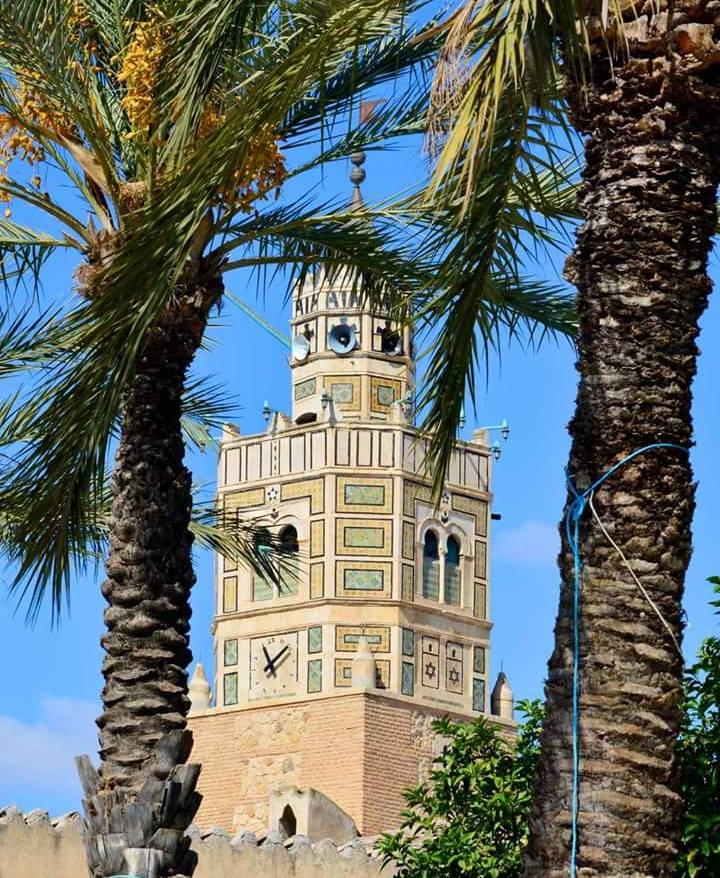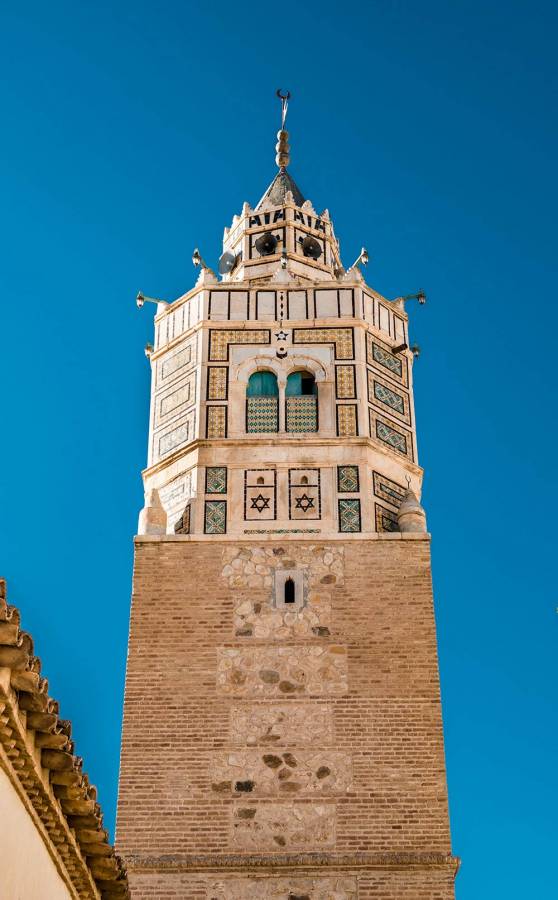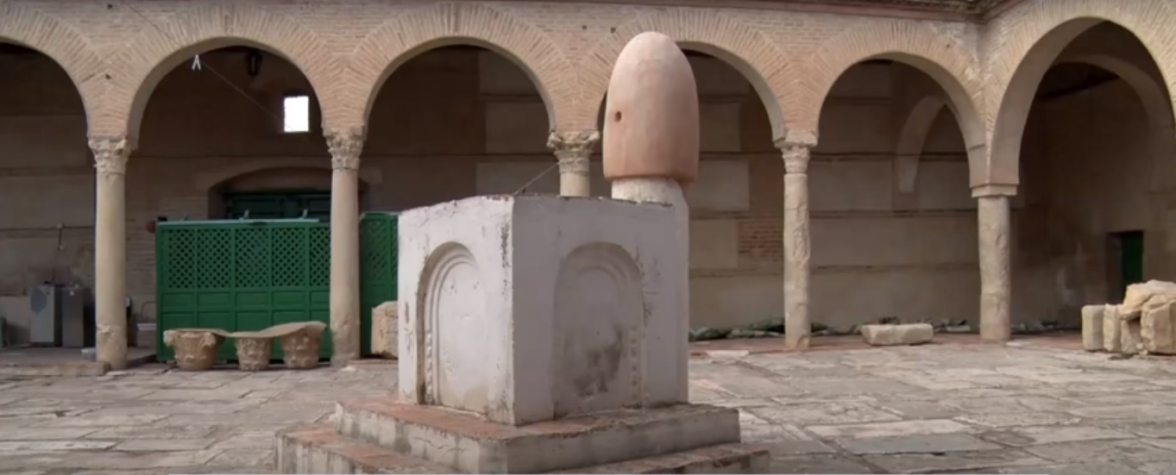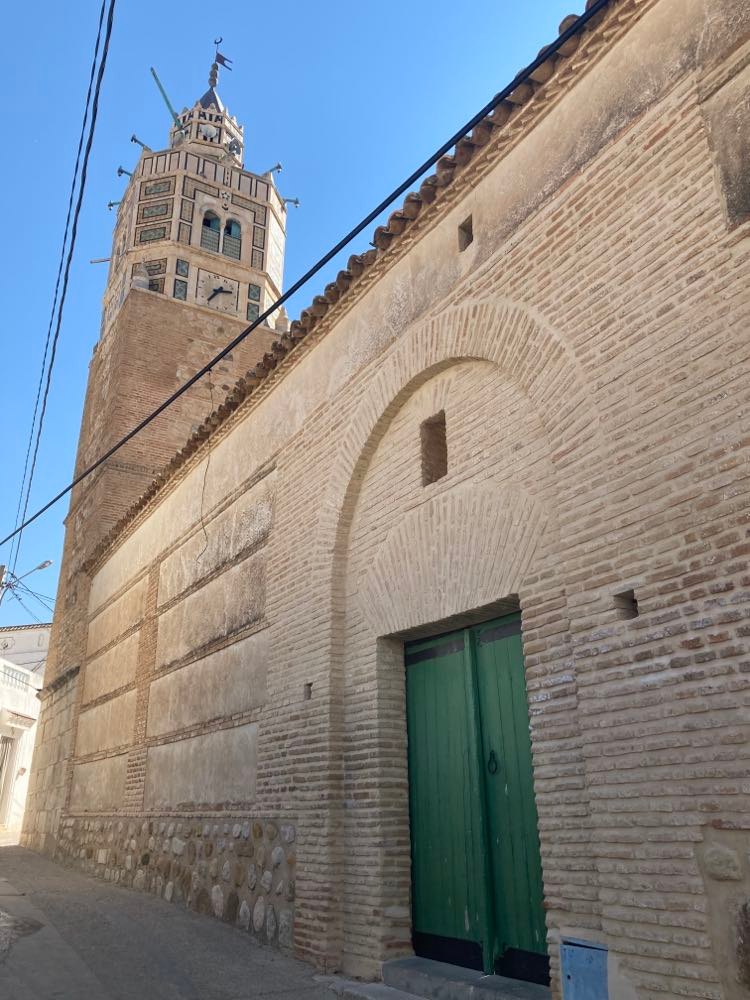0uss
·Dear OF members,
I have been wavering for a while to write about a story that has been fascinating me for quite a while. Perhaps the lack of useful information was keeping me from doing so. Today, I’m humbled to deliver what I could gather about a very intriguing and curious “reversed” minaret clock located in Testour – Tunisia, a city on the ancient path from Carthage to Theveste.
According to historic references, the migration of the “Andalusian” Moriscos to the Maghreb occurred in three stages, in the 13th century, the 15th century, and the 17th century AD.
The number of arrivals to Tunisia in the 17th century solely reached more than 80,000 immigrants, and some of them would call Testour their new home.
Testour is a picturesque Tunisian town that was founded by Andalusians on the banks of the Majerda River in the beginning of the 17th century, on the remains of the Roman city of Tchilla, 70 kilometers west of the capital.
In 1630, Mohamed Tagharino, an Andalusian architect, used materials recovered from ancient roman ruins to erect the great mosque of Testour, an absolutely remarkable architectural gem in different aspects.
The minaret is for its part captivating and in turn resembles the Aragonese bell towers of southern Spain.
It more or less takes on the structure of a campanile that stands out for its various decorations, shapes and marble inscriptions, punctuated by windows made of green tiles and faience frills which may be unlike any other on the face of the earth.
The minaret is also decorated with Stars of David commonly found in Tunisian mosques, house doors and “Zaouias”. It reflects the extent of the residents’ tolerance and acceptance of each other and their respect for differences. The Morisco Jewish community was also well integrated among the population and undoubtedly contributed to the construction of the minaret.
The clock was installed in the Minaret’s silo 100 years after the construction of the mosque and soon became the city’s symbol that continues to fascinate generations, especially for its reversed rotation and indices contrary to a typical dial layout.
It's 09:26
All these combined elements make this mosque not only a unique example but also a major tourist attraction for Testour.
To investigate the clock’s history, a local engineer and researcher was allowed in 2015 to enter the control room at the top of the mosque’s silo, to find that its mechanism still preserves the components of rotation according to the physical rules that were put into it since its first tick.
The clock has now returned to work after it had stopped completely for almost three centuries. Many repairs and modifications have been brought to the mechanism, including a satellite linkage, to stabilize timekeeping and adjust it automatically to avoid any deviations that can occur from time, man or nature.
Restoration work in progress
In the mosque’s courtyard, between the rock tiles, we can also find another timekeeping instrument, which is not as intricate as the clock but seemingly crucial for its function. The sundial’s platform is called “Mizwala” a word derived from “Zawal” which is English for “noon”. The dated instrument just below the minaret was executed by Ahmed Al-Harrar in 1761.
The Mizwala is divided according to several lines to determine prayer times by adopting a thin thread. The first line represents the timing of an hour before sunrise, while the second line indicates the passage of an hour after and so on. The very center represents noon prayer and the same logic is applicable for the rest of other prayers.
In Testour, time is read the Andalusian way and as the legend says, Moriscos yearned to return to their past in Andalusia, and they set up that clock in order to be an expression of their desire to return backwards.
But there are those who say that the clock has another interpretation, according to some local commentators: The reason behind this inverted layout may be likely proportional to the movement of the planets in space around the sun, or perhaps the same direction of circumambulation around Al-Kaaba during pilgrimage.
We’ll never know for sure, but personally, I think the most logical explanation has to do with the writing direction of Arabic, from right to left.
Very few reversed clocks can be found scattered around the globe From Prague, Münster, Florence, La Paz and perhaps the least known example of Testour.
Each one of them has its own story, riddles and symbols and our present example sheds, with its scientific background, some light on its development and theories between the ages, focusing on its position in Islamic civilization.
It is a unique edifice in the Muslim world and the pride of the inhabitants. No wonder it is so close to my heart!
Thanks for looking and apologies for any grammatical errors. 😀
Wrist check bonus: Longines 4204 with a sector dial 😎
I have been wavering for a while to write about a story that has been fascinating me for quite a while. Perhaps the lack of useful information was keeping me from doing so. Today, I’m humbled to deliver what I could gather about a very intriguing and curious “reversed” minaret clock located in Testour – Tunisia, a city on the ancient path from Carthage to Theveste.
According to historic references, the migration of the “Andalusian” Moriscos to the Maghreb occurred in three stages, in the 13th century, the 15th century, and the 17th century AD.
The number of arrivals to Tunisia in the 17th century solely reached more than 80,000 immigrants, and some of them would call Testour their new home.
Testour is a picturesque Tunisian town that was founded by Andalusians on the banks of the Majerda River in the beginning of the 17th century, on the remains of the Roman city of Tchilla, 70 kilometers west of the capital.
In 1630, Mohamed Tagharino, an Andalusian architect, used materials recovered from ancient roman ruins to erect the great mosque of Testour, an absolutely remarkable architectural gem in different aspects.
The minaret is for its part captivating and in turn resembles the Aragonese bell towers of southern Spain.
It more or less takes on the structure of a campanile that stands out for its various decorations, shapes and marble inscriptions, punctuated by windows made of green tiles and faience frills which may be unlike any other on the face of the earth.
The minaret is also decorated with Stars of David commonly found in Tunisian mosques, house doors and “Zaouias”. It reflects the extent of the residents’ tolerance and acceptance of each other and their respect for differences. The Morisco Jewish community was also well integrated among the population and undoubtedly contributed to the construction of the minaret.
The clock was installed in the Minaret’s silo 100 years after the construction of the mosque and soon became the city’s symbol that continues to fascinate generations, especially for its reversed rotation and indices contrary to a typical dial layout.
It's 09:26
All these combined elements make this mosque not only a unique example but also a major tourist attraction for Testour.
To investigate the clock’s history, a local engineer and researcher was allowed in 2015 to enter the control room at the top of the mosque’s silo, to find that its mechanism still preserves the components of rotation according to the physical rules that were put into it since its first tick.
The clock has now returned to work after it had stopped completely for almost three centuries. Many repairs and modifications have been brought to the mechanism, including a satellite linkage, to stabilize timekeeping and adjust it automatically to avoid any deviations that can occur from time, man or nature.
Restoration work in progress
In the mosque’s courtyard, between the rock tiles, we can also find another timekeeping instrument, which is not as intricate as the clock but seemingly crucial for its function. The sundial’s platform is called “Mizwala” a word derived from “Zawal” which is English for “noon”. The dated instrument just below the minaret was executed by Ahmed Al-Harrar in 1761.
The Mizwala is divided according to several lines to determine prayer times by adopting a thin thread. The first line represents the timing of an hour before sunrise, while the second line indicates the passage of an hour after and so on. The very center represents noon prayer and the same logic is applicable for the rest of other prayers.
In Testour, time is read the Andalusian way and as the legend says, Moriscos yearned to return to their past in Andalusia, and they set up that clock in order to be an expression of their desire to return backwards.
But there are those who say that the clock has another interpretation, according to some local commentators: The reason behind this inverted layout may be likely proportional to the movement of the planets in space around the sun, or perhaps the same direction of circumambulation around Al-Kaaba during pilgrimage.
We’ll never know for sure, but personally, I think the most logical explanation has to do with the writing direction of Arabic, from right to left.
Very few reversed clocks can be found scattered around the globe From Prague, Münster, Florence, La Paz and perhaps the least known example of Testour.
Each one of them has its own story, riddles and symbols and our present example sheds, with its scientific background, some light on its development and theories between the ages, focusing on its position in Islamic civilization.
It is a unique edifice in the Muslim world and the pride of the inhabitants. No wonder it is so close to my heart!
Thanks for looking and apologies for any grammatical errors. 😀
Wrist check bonus: Longines 4204 with a sector dial 😎












